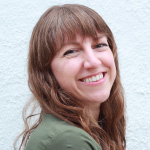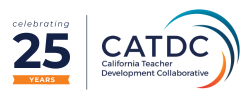How to Extend and Deepen Learning after Professional Development

Amidst a rapidly changing world, educators are charged with not only keeping abreast with the trends in their subject areas, but also remaining curious and growing in the areas of social and emotional learning, equity literacy, and leadership development. And at the school level, leaders know the research—teachers’ job satisfaction is directly linked to access to ongoing opportunities to learn and grow. According to a NAIS study on independent school teachers’ job satisfaction, “supporting teacher autonomy and collegial relationships should be of highest priority.” Both goals can be met with high-quality professional development experiences that prioritize building community. However, even after attending such an event, it isn’t always obvious how to bring what was learned back to one’s school site. And for school leaders, the systems might not be in place to follow-up with those who attended a training or conference to extend the learning beyond an individual’s experience.
After many years of working with CATDC and attending hundreds of professional development programs, I have observed the palpable energy and momentum born from a one-day or multiple-day workshop. When the facilitator begins to wrap up or the feedback survey lands in each participants’ inbox, I can feel an urgency within myself. During many of our programs deep connections are forged through storytelling, identity work, and the profoundness of being seen, and it is hard to say goodbye to those beautiful moments of interconnectedness. To remedy this I have created Facebook groups and coordinated follow-up sessions, but these attempts to recreate the learning and community of that day or days mostly fall short. And there is much to cultivate: from budding professional relationships to professional growth and career advancement plans. How can we take the intentions set to be more of a change maker or to move our career in a new direction into our teaching practice and professional journeys?
Leading from the Middle
Sometimes the charge to attend a particular PD is directly linked to a school initiative; other times educators are leading the way from the middle. Perhaps the participant sees the need for more equitable hiring practices, wants to develop student affinity groups, or practice difficult conversations, and they are attending a workshop to meet like-minded individuals as well as become a changemaker at their school. They hopefully attend a PD that meets most of their needs and wants, but that isn’t enough to foster change back at their school site. The inbox is full after missing one or multiple days and those goals to implement or share new knowledge are pushed to someday in the future. Also, even when a clear direction forward can be visualized, perceived or real resistance from colleagues can make it difficult to put a plan into action. Despite these hurdles, I have found success myself in bringing learning back to my colleagues and have witnessed local educators share their learning in meaningful ways.
I wouldn’t do the work I do unless I strongly believed in all our abilities to be transformed and the power we all have to extend that learning to others. Margaret Wheatley, in her article Bringing Schools Back to Life: Schools as Living Systems, offers an abundance of inspiration for keeping on, even when the school support isn’t there just yet. “We don’t have to achieve “critical mass”, we don’t need programs that “roll-out” (or over) the entire organization, we don’t need to train every individual or part, we can stop obsessing if we don’t get the support of the top of the organization. Instead, we can work locally, finding the meaning-rich ideas and processes that create energy in one area of the system. If we succeed in generating energy in one area, then we can watch how our other networks choose to notice what we’re doing. Who lights up and takes notice? Where have our ideas traveled to in the organizational web? If we ask these questions, we learn who might be ready to take up this work next.” Keeping Wheatley’s advice in mind, don’t get overwhelmed by everything that could be done; instead choose one or two next steps and see where that leads you.
Practical Steps and Practices to Continue the Learning and Make an Impact
- Advocate for team learning: invite a colleague to attend PD with you to invest in your working relationship. You will have a natural ally and support system when you return to school.
- Share resources with colleagues: send an article that the facilitator recommended, make time to meet and share three of your main takeaways with your department chair, write a blog post for your school newsletter, or ask for 15 minutes to speak at the next faculty meeting.
- Keep in touch: stay connected with the organization, facilitator, and fellow participants by adding them on Twitter, shooting them an email, or planning a Zoom call for a week later.
- Continue the learning: has the facilitator written articles or a book? Did you realize there is a knowledge gap in a particular area and resources were recommended? Keep the learning going and remain intentional about building capacity.
- Provide feedback: if the organization invites you to take a feedback survey, take it! Synthesizing your own learning will help solidify your key takeaways.
- Continue to reflect: most PD days offer many moments for reflection which is what makes them highly transformative. Don’t stop now! Make time to reflect on how your new knowledge is changing your practice and keep iterating.
- Set long term professional goals: continue to invest in yourself and chart out your hopes and concrete plans to get there.
Creating a Culture of Learning at the School Level
If you are lucky, your school or organization is actively creating a culture of learning and offers opportunities for collaboration. This is of utmost importance because as Wheatley puts it, “people only support what they create.” As a leader, inviting your whole school to create the future we all need is the first step towards success. The invitation to participate honors the expertise that each educator has and also deepens each school member’s commitment to the whole community. Create and then support systems that make the following practices possible:
- Create leadership opportunities at all levels
- Ask who is missing from this conversation when making decisions
- Create opportunities to receive and give feedback
- Provide opportunities for practice (again with feedback)
- Model self-awareness and provide ongoing opportunities for personal reflection and sharing
- Recognize successes at all levels
You can read more about the importance of organizational support in relation to professional development here.
Effective professional development and strong professional community at the school site and beyond are connected. The National Education Association explains, “both case study and survey research suggest that the relationships between professional development and professional community are likely to be reciprocal, with good professional development stimulating or strengthening professional community and professional community providing fertile ground for participation in professional development.” I find this comforting. All good things involve practice and care and our capacity to learn and grow are so deeply connected to the simple fact that we are engaged in that ongoing effort. And all the better that we get to do it together.
What is your school doing to bring individual or team learning back to the whole community? Comment below or shoot us an email if you would like to write for the blog or simply chat!

Tracy Gallagher is the Director of Communications and Marketing at CATDC and serves on the board of Luna Dance Institute.
2 Comments
Leave a Comment
You must be logged in to post a comment.

This is a wonderful article, Tracy; it is full of wisdom and practical advice. And it is beautifully expressed. I love this: “And all the better because we get to do it together.”
Thank you, Janet!